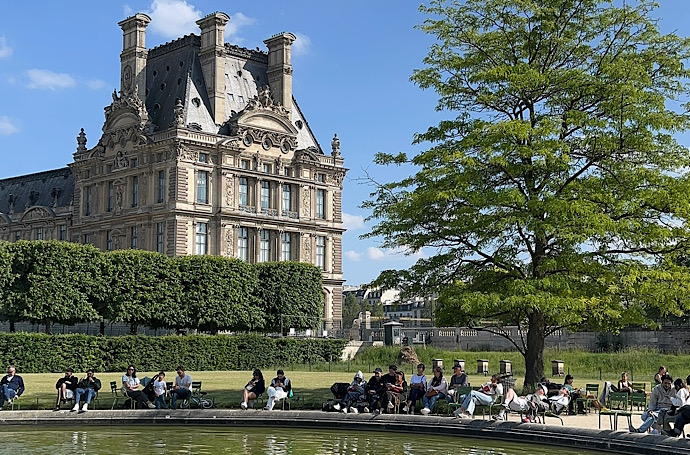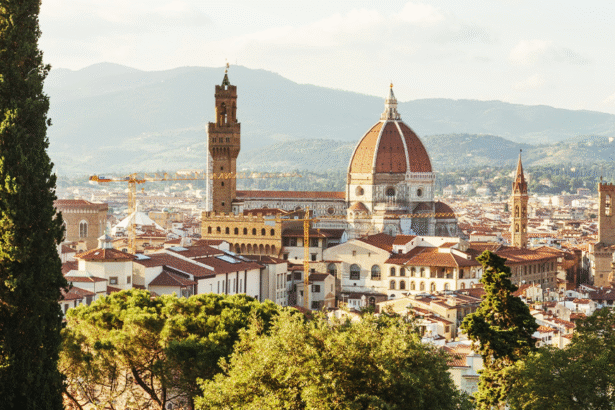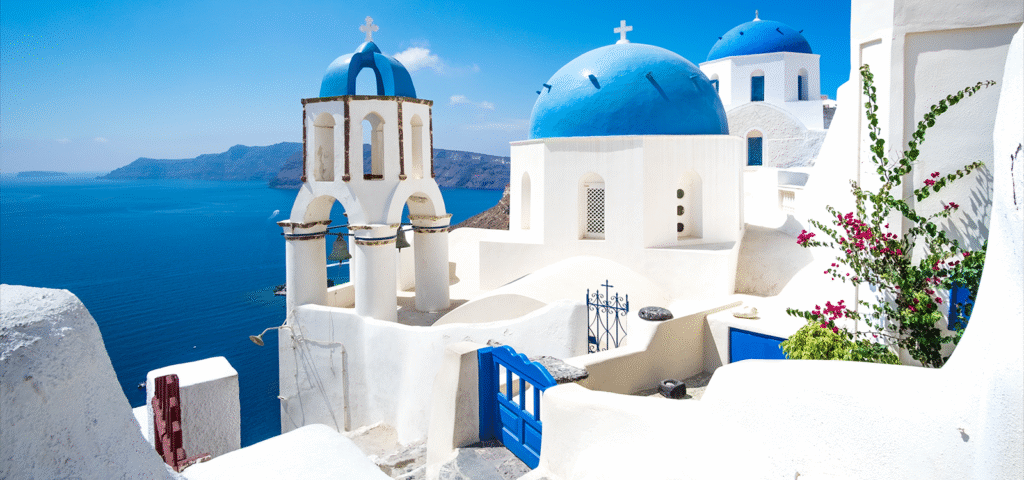You’ve seen the social media posts and travel articles: “10 countries in 14 days!” with carousel photos of passport stamps and blurry train windows. The comments are full of fire emojis and “goals!” But as you scroll, something feels off. Where are the moments of genuine connection? The experiences that changed how someone sees the world? The stories that make you lean in closer?
If you’re someone who values depth over quantity—in your work, your relationships, and your experiences—it’s time to discover why slow travel creates the transformative escapes you’re actually seeking.
The Myth of Maximum Coverage
We’ve been conditioned to measure travel success by stamps in our passport and pins on a map. The prevailing wisdom suggests that if you’re investing time and money in international travel, you should see “everything” while you’re there. After all, when will you get back to Europe again?
This thinking treats travel like a productivity challenge: optimize routes, minimize time in each location, maximize sights seen. It’s the same efficiency mindset that serves you well in your professional life applied to something that should offer respite from that very approach.
But here’s what actually happens when you try to cover seven countries in two weeks: You spend more time in airports and train stations than in actual destinations. You see famous landmarks through the lens of exhaustion. You collect experiences instead of absorbing them. You return home with hundreds of photos but struggle to remember how anything actually felt.
The irony? In trying to see everything, you experience very little.
What Slow Travel Actually Means
Slow travel isn’t about spending months in one place or traveling on a shoestring budget. It’s about intentional depth over reflexive breadth. It’s choosing to understand a place rather than simply visit it.
When you give yourself three unhurried days in Paris instead of a whirlwind afternoon between London and Rome, something profound shifts. You stop being a tourist checking items off a list and start being a temporary resident developing genuine connections with a place.
This approach honors how humans actually process and remember experiences. Our brains need time to move beyond surface impressions and develop deeper understanding. The magic happens not in the first moment you see the Eiffel Tower, but in the third day when you discover how the morning light hits the Seine differently than the evening glow.
The Sensory Revelation of Staying Put
Day One: Surface Impressions
You arrive tired from travel, oriented around the obvious landmarks. Everything feels new and slightly overwhelming. You’re taking photos to capture what you’re seeing, trying to document that you were there.
Day Two: Rhythm Discovery
You start to notice patterns. Which café has the best morning light? How does the neighborhood change between lunch and dinner? You begin to move through the city with more confidence, less urgency. Your senses are more attuned.
Day Three: Authentic Connection
This is when transformation happens. You’re no longer a visitor observing from the outside—you’re briefly part of the place’s daily rhythm. The baker recognizes you. You know which metro car positions you best for your stop. You understand how locals interact with their environment.
This progression is impossible when you’re changing countries every other day.
The Paris Case Study: Depth vs. Distance
The Multi-Country Approach:
- Day 1: Fly to London, see Big Ben and Westminster
- Day 2: Eurostar to Paris, climb Eiffel Tower, quick Louvre visit
- Day 3: Train to Brussels, see Grand Place
- Day 4: Travel to Amsterdam, canal tour
- Day 5: Flight to Berlin, Brandenburg Gate
- Days 6-7: Prague, castle and Charles Bridge
- …and so on
The Slow Travel Approach to Paris:
- Day 1: Arrive, settle into your neighborhood café where the afternoon sun slants through tall windows, evening stroll where you discover the sound of your footsteps echoing differently on cobblestones than concrete
- Day 2: Morning at the market where vendors call out prices in melodic French, your fingers selecting sun-warmed tomatoes while breathing in the mingled scents of fresh herbs and crusty bread; cooking class where you learn to taste the difference between good butter and extraordinary butter, your hands learning the feel of properly kneaded dough
- Day 3: Early morning photography walk when the city belongs to delivery trucks and joggers, the light golden and forgiving; leisurely lunch at a bistro where you’ve become familiar enough with the server to attempt French phrases, evening concert where live music fills a centuries-old church and you understand why acoustics matter
Notice the difference? In the slow travel version, you’re not just seeing Paris—you’re feeling the texture of its daily life against your skin. You’re developing personal preferences: this corner café over that famous one because the owner remembers how you take your coffee. You’re creating a Paris that belongs to you specifically, built from sensory memories that will transport you back long after you return home.
The multi-country approach gives you photographs and bragging rights. The slow travel approach gives you a piece of Paris that lives in your senses forever—the way morning light tastes different when accompanied by perfectly flaky croissants, the sound of church bells marking time in a rhythm that slows your heartbeat, the feeling of belonging somewhere that once felt foreign.
Why This Appeals to Discerning Travelers
Quality Over Quantity Mindset
You understand this principle in your professional life. The best work comes from focused attention, not rushed execution. The same applies to travel experiences. A thoughtfully planned three-day immersion in Paris will create more meaningful memories than a surface-level European sampler.
Time as a Luxury
Your most precious resource isn’t money—it’s time. Slow travel honors this by eliminating the time waste of constant packing, travel days, and reorientation. Instead of spending 30% of your trip in transit, you spend 90% actually experiencing your destination.
Authentic Cultural Connection
You’re seeking experiences that expand your perspective, not just photo opportunities. Slow travel creates space for the unexpected conversations, the discovered neighborhood gems, the cultural insights that only emerge when you’re not rushing to the next scheduled activity.
Reduced Decision Fatigue
Every destination change requires dozens of micro-decisions: where to eat, how to get around, what to prioritize with limited time. Staying put allows you to make these decisions once, then focus on enjoyment rather than constant logistics.
The Hidden Benefits of Staying Put
Deeper Sensory Engagement
When you’re not constantly adjusting to new environments, your senses become more attuned to subtle details. You notice how the afternoon light changes the color of Parisian buildings. You begin to distinguish between the sounds of different neighborhoods. You develop preferences for specific bakeries based on texture and aroma, not just convenience.
Cultural Context Development
Understanding develops gradually. The first time you observe a French café, you notice the obvious differences from home. By day three, you understand the unspoken social protocols, the rhythm of service, the way locals use these spaces. This context enriches every subsequent experience.
Stress Reduction
Constant travel creates low-level stress, even when exciting. Your nervous system is continuously adapting to new environments, languages, and logistics. Slow travel allows you to actually relax and enjoy the rejuvenation you’re seeking.
Spontaneity Opportunities
When you’re not locked into a rigid multi-country schedule, you can follow interesting discoveries. That local festival you stumble upon? You can attend instead of rushing to catch a train. The charming side street you notice? You can explore it instead of worrying about time.
The Economic Reality
Counterintuitively, slow travel often costs less while delivering more value. You eliminate constant transportation costs, reduce accommodation booking fees, and avoid the premium pricing that comes with last-minute decisions in new cities.
More importantly, you maximize the value of experiences you’re already paying for. That cooking class in Paris? When you’re rushing through multiple countries, it’s just another activity. When you have time to process and appreciate it, it becomes a skill you might pursue at home.
Designing Your Slow Travel Experience
Choose Destinations That Reward Depth
Not every location benefits equally from extended time. Paris, with its neighborhood diversity, cultural richness, and layered history, reveals new aspects over several days. A place chosen primarily for one attraction might not sustain longer exploration.
Note: This doesn’t mean multi-destination trips can’t be meaningful—they absolutely can when designed thoughtfully. The key is allowing sufficient time in each location to move beyond surface impressions and giving yourself space to absorb experiences rather than simply collect them. A well-planned journey through three carefully selected destinations over two weeks can be just as transformative as a week in a single city, when each stop is given proper attention and connection time.
Plan for Rhythm, Not Just Activities
The best slow travel experiences alternate between planned cultural immersion and unstructured exploration time. You need both guided learning and personal discovery.
Embrace the Art of Lingering
Give yourself permission to spend an entire afternoon in one café, people-watching and journaling. Return to places that intrigued you on first visit. This isn’t inefficiency—it’s how deep experiences develop.
Focus on Sensory Engagement
Prioritize experiences that engage multiple senses: cooking classes, market tours, music performances, textile workshops. These create stronger memories and deeper cultural understanding than purely visual sightseeing.
The Transformation Factor
Travelers who embrace slow travel consistently report a different type of transformation. Instead of returning home feeling like they need a vacation to recover from their vacation, they feel genuinely restored and inspired.
They develop lasting interests: perhaps French cooking techniques or architectural photography. They gain cultural perspectives that influence how they see their own environment. They create specific, vivid memories instead of a blur of landmarks.
Most importantly, they prove to themselves that they can step off the productivity treadmill and still have rich, meaningful experiences. This permission often extends beyond travel into other areas of life.
Your Next Escape
If you’re ready to trade exhausting itineraries for transformative experiences, consider how slow travel might change your next escape. Instead of asking “How much can we see?” try asking “How deeply can we experience this place?”
The goal isn’t to collect destinations—it’s to collect moments, insights, and inspirations that enrich your life long after you return home. Sometimes the most profound journeys happen not by covering the most distance, but by giving yourself permission to truly arrive somewhere and stay long enough to understand why it matters.
Ready to discover the transformative power of slow travel? At My Tailored Escape, we specialize in designing depth-focused experiences that honor your need for genuine cultural connection and restoration. Let’s discuss how to create your perfect slow travel escape.



